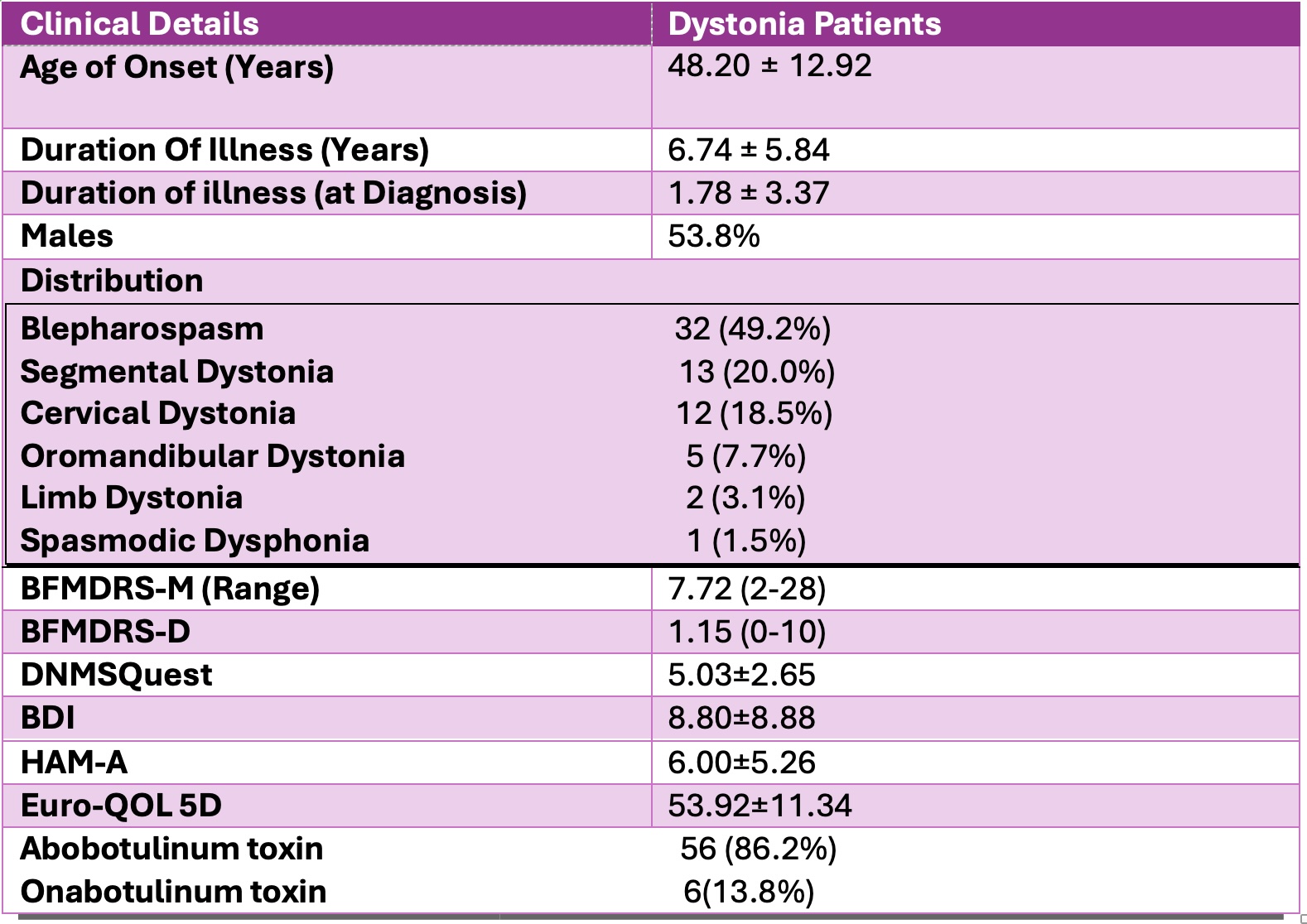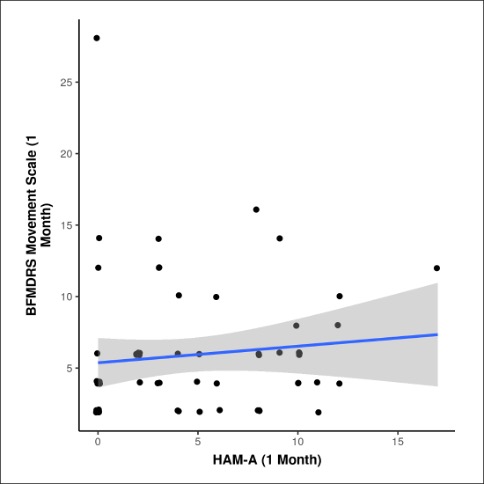Objective: To assess the effect of Botulinum toxin on non-motor symptoms and quality of life in patients with adult-onset idiopathic focal dystonia.
Background: A broad spectrum of non-motor symptoms, including depression, anxiety, sleep disturbances, pain and cognitive dysfunction, can occur in idiopathic dystonia1,2. These symptoms are not just a consequence of motor disability and are a much more important predictor of quality of life than the severity of dystonia.
Method: Patients aged > 18 years diagnosed with idiopathic focal dystonia were recruited in this prospective cross-sectional interventional study. Patients with secondary dystonia, including drug-induced dystonia, concurrent other movement disorder phenomenology, previously diagnosed psychiatric illness and having received botulinum toxin injections in the past three months were excluded. The severity of dystonia, non-motor symptoms, and quality of life was evaluated using the Burke-Fahn Marsden Dystonia Rating Scale (BFMDRS), Dystonia Non-motor Symptoms Questionnaire (DNMSQuest), and EuroQOL-5 dimensions (EQ-5D), respectively, at baseline and at 1 and 3 months after botulinum toxin.
Results: 65 patients were recruited with a median age of 59 (IQR 48-64). Blepharospasm was the most common phenomenology (49.2%). The mean BFMDRS movement and disability score was highest in segmental and limb dystonia. 49.2% of patients had depression at baseline assessed using the Beck Depression Inventory (BDI). Only one patient had anxiety at the presentation, evaluated by the Hamilton Anxiety Rating Scale (HAM-A). There was a significant negative correlation between baseline BFMDRS, DNMSQuest, BDI, and HAM-A scores and quality of life, but there was no relation with the type of focal dystonia. The mean percentage improvement in the BFMDRS-M, BFMDRS-D, DNMSQuest, BDI, HAM-A and EQ-5D was 25%, 52%, 16%,20%,23% and 23%, respectively, at one month. There was no statistically significant correlation between percentage change in motor scores compared to depression and quality of life scores at one month.
Conclusion: Botulinum toxin improved motor and non-motor scores and quality of life at 1 and 3 months after botulinum toxin therapy. The motor scores did not correlate with depression and DNMSQUEST scores but showed a weak positive correlation with anxiety scores.
Clinical characteristics of study participants
Association between HAM-A and BFMDRS
References: 1. Costanzo M, Belvisi D, Berardelli I, Maraone A, Baione V, Ferrazzano G, Cutrona C, Leodori G, Pasquini M, Conte A, Fabbrini G, Defazio G, Berardelli A. Effect of Botulinum Toxin on Non-Motor Symptoms in Cervical Dystonia. Toxins (Basel). 2021 Sep 12;13(9):647.
2. Novaretti N, Cunha ALN, Bezerra TC, Pena Pereira MA, de Oliveira DS, Macruz Brito MMC, Pimentel AV, Brozinga TR, Foss MP, Tumas V. The Prevalence and Correlation of Non-motor Symptoms in Adult Patients with Idiopathic Focal or Segmental Dystonia. Tremor Other Hyperkinet Mov (N Y). 2019 Feb 4;9:596.
To cite this abstract in AMA style:
S. Mehta, R. Gupta, N. Balaini, S. Grover, V. Lal. Effect Of Botulinum Toxin On Non-Motor Symptoms In Adult-Onset Idiopathic Focal Dystonia [abstract]. Mov Disord. 2024; 39 (suppl 1). https://www.mdsabstracts.org/abstract/effect-of-botulinum-toxin-on-non-motor-symptoms-in-adult-onset-idiopathic-focal-dystonia/. Accessed January 5, 2026.« Back to 2024 International Congress
MDS Abstracts - https://www.mdsabstracts.org/abstract/effect-of-botulinum-toxin-on-non-motor-symptoms-in-adult-onset-idiopathic-focal-dystonia/


